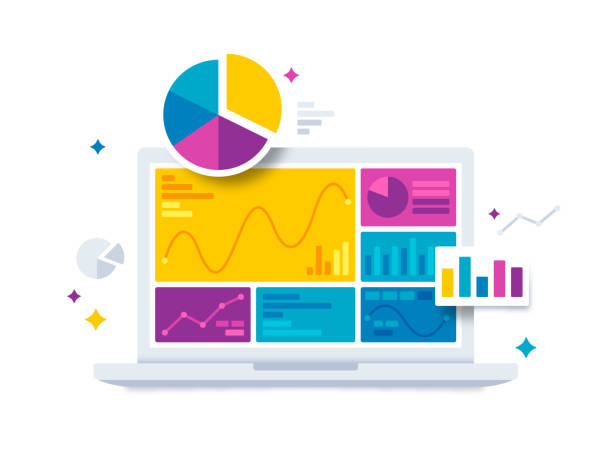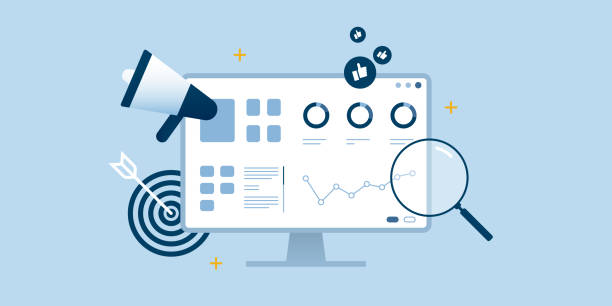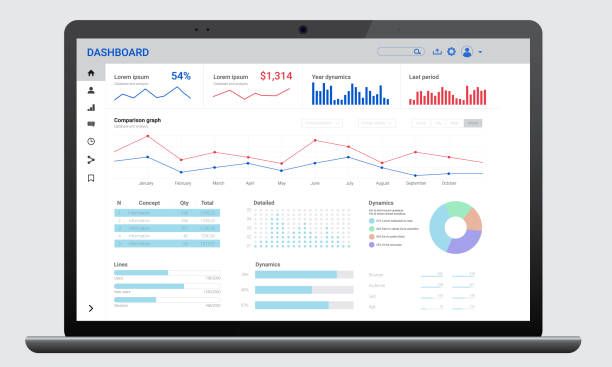Web Investigation Is The Most Common Way Of Dissecting The Way Of Behaving Of Guests To A Site. This Includes Following, Evaluating, And Revealing Information To Gauge Web Action, Including The Utilization Of A Site And Its Parts, Like Pages, Pictures, And Recordings. Information Gathered Through Web Examination Might Incorporate Traffic Sources, Alluding Destinations, Site Hits, Ways Taken, And Transformation Rates. The Ordered Information Frequently Frames A Piece Of Client Relationship The Board Investigation (CRM Examination) To Work With And Smooth Out Better Business Choices. Web Examination Empowers A Business To Hold Clients, Draw In Additional Guests, And Increment The Dollar Volume Every Client Spends.

Analytics can help in the following ways:
• Decide The Probability That A Given Client Will Repurchase An Item In The Wake Of Buying It Previously.
• Customize The Site To Clients Who Visit It Over And Over.
• Screen How Much Cash Individual Clients Or Explicit Gatherings Of Clients Spend.
• Notice The Geographic Locales From Which Most And The Least Clients Visit The Site And Buy Explicit Items.
• Foresee Which Items Clients Are Most And To The Least Extent Liable To Purchase From Here On Out.
The Goal Of Web Examination Is To Act As A Business Metric For Elevating Explicit Items To The Clients Who Are Probably Going To Get Them And To Figure Out Which Items A Particular Client Is Probably Going To Buy. This Can Assist With Working On The Proportion Of Income To Advertising Costs. Notwithstanding These Elements, Web Examination Might Follow The Clickthrough And Drilldown Conduct Of Clients Inside A Site, Decide The Destinations From Which Clients Most Frequently Show Up, And Speak With Programs To Follow And Investigate Online Way Of Behaving. The Aftereffects Of Web Examination Are Given As Tables, Diagrams, And Charts.
Web Analytics Process
The Web Investigation Process Includes The Accompanying Advances:
1. Setting Objectives. The Most Vital Phase In The Web Examination Process Is For Organizations To Decide on Objectives And The Outcome They Are Attempting To Accomplish. These Objectives Can Incorporate Expanded Deals, Consumer Loyalty And Brand Mindfulness. Business Objectives Can Be Both Quantitative And Subjective.
2. Collecting Information. The Subsequent Move Toward Web Investigation Is The Assortment And Capacity Of Information. Organizations Can Gather Information Straightforwardly From A Site Or Web Investigation Device, Like Google Examination. The Information Primarily Comes From Hypertext Move Convention Demands – – Including Information At The Organization And Application Levels – – And Can Be Joined With Outside Information To Decipher Web Utilization. For Instance, A Client’s Web Convention Address Is Commonly Connected With Many Elements, Including Geographic Area And Clickthrough Rates.
3. Processing Information. The Following Phase Of The Web Investigation Pipe Includes Organizations Handling The Gathered Information Into Significant Data.
4. Identifying Key Execution Pointers (KPIs). In Web Examination, A KPI Is A Quantifiable Measure To Screen And Dissect Client Conduct On A Site. Models Incorporate Skip Rates, Interesting Clients, Client Meetings, And On Location Search Questions.
5. Developing A Technique. This Stage Includes Carrying Out Experiences To Form Systems That Line Up With An Association’s Objectives. For Instance, Search Questions Directed Nearby Can Assist An Association With Fostering A Substance Procedure In Light Of What Clients Are Looking For On Its Site.
6. Experimenting And Testing. Organizations Need To Explore Different Avenues Regarding Various Systems To Track Down The One That Yields The Best Outcomes. For Instance, A/B Testing Is A Straightforward Methodology To Assist With Figuring Out How A Group Of People Answers Different Substances. The Interaction Includes Making At Least Two Variants Of Content And Afterward Showing It To Various Crowd Fragments To Uncover Which Rendition Of The Substance Performs Better.

What Are The Two Main Categories Of Web Analytics?
The Two Fundamental Classifications Of Web Investigation Are Off-Website Web Examination And On Location Web Investigation.
Off-Site Web Analytics
The Term Off-Website Web Examination Alludes To The Act Of Checking Guest Action Beyond An Association’s Site To Gauge the Expected Crowd. Off-Webpage Web Examination Gives An Industrywide Investigation That Gives Knowledge Into How A Business Is Acting In Contrast With Contenders. It Alludes To The Sort Of Investigation That Spotlights On Information Gathered From Across The Web, Like Virtual Entertainment, Web Search Tools, And Discussions.
On-Site Web Analytics
Location Web Investigation Alludes To A Smaller Center That Utilizes Examination To Follow The Action Of Guests To A Particular Webpage To Perceive How The Website Is Performing. The Information Assembled Is Typically More Pertinent To A Site’s Proprietor And Can Remember Subtleties For Site Commitment, For Example, What Content Is Generally Famous. Two Innovative Ways To Deal With On-Location Web Examination Incorporate Log Document Investigation And Page Labeling. Log Record Examination, Otherwise Called Log The Board, Is The Most Common Way Of Breaking Down Information Accumulated From Log Documents To Screen, Investigate And Provide Details Regarding The Exhibition Of A Site. Log Documents Hold Records Of Each Move Made On An Organization Server, Like A Web Server, Email Server, Information Base Server, Or Document Server. Page Labeling Is The Method Involved With Adding Pieces Of Code Into A Site’s Hypertext Markup Language Code Utilizing A Label The Board Framework To Follow Site Guests And Their Connections Across The Site. These Scraps Of Code Are Called Labels. At The Point When Organizations Add These Labels To A Site, They Can Be Utilized To Follow Quite A Few Measurements, For Example, The Number Of Pages Saw, The Number Of Interesting Guests The Number Of Explicit Items Saw.

Web Analytics Tools
Web Investigation Devices Report Significant Measurements On A Site, For Example, Where Guests Came From, How Long They Remained, How They Tracked Down The Website And Their Internet Based Movement While On The Webpage. Notwithstanding Web Investigation, These Instruments Are Usually Utilized For Item Examination, Online Entertainment Investigation, And Promoting Examination.

